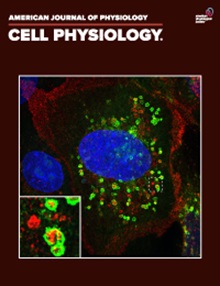Modulation of fatty acid metabolism via lactate-HCA1 signaling: potential therapeutic implications.
IF 5
2区 生物学
Q2 CELL BIOLOGY
American journal of physiology. Cell physiology
Pub Date : 2025-04-01
Epub Date: 2025-03-17
DOI:10.1152/ajpcell.00969.2024
引用次数: 0
通过乳酸- hca1信号调节脂肪酸代谢:潜在的治疗意义。
鉴于乳酸/HCA1信号通路对甘油三酯转化和动员的调节作用,它已成为代谢性疾病临床管理的一个有希望的靶点。然而,该通路在脂肪组织、骨骼肌和肝脏中的不同作用提出了一个重要的问题,即激活或抑制它是否会产生最有利的结果。在脂肪组织中,HCA1的激活抑制脂肪分解,而在骨骼肌中,最近的证据表明乳酸可能绕过HCA1直接增强线粒体脂肪酸氧化。在肝脏中,HCA1活化与促进脂质氧化有关,具有潜在的治疗意义。这一观点还探讨了乳酸/HCA1通路介导运动训练引起的全身适应性的潜力,包括线粒体能力和代谢灵活性的增强。这些见解强调了该途径与代谢健康和运动生理学的相关性。然而,目前对乳酸/HCA1通路的了解仍然不完整,关于其在代表性不足的人群中的作用及其组织特异性作用的分子机制的知识存在重大空白。解决这些限制对于完善该途径的治疗和临床应用至关重要。
本文章由计算机程序翻译,如有差异,请以英文原文为准。
求助全文
约1分钟内获得全文
求助全文
来源期刊
CiteScore
9.10
自引率
1.80%
发文量
252
审稿时长
1 months
期刊介绍:
The American Journal of Physiology-Cell Physiology is dedicated to innovative approaches to the study of cell and molecular physiology. Contributions that use cellular and molecular approaches to shed light on mechanisms of physiological control at higher levels of organization also appear regularly. Manuscripts dealing with the structure and function of cell membranes, contractile systems, cellular organelles, and membrane channels, transporters, and pumps are encouraged. Studies dealing with integrated regulation of cellular function, including mechanisms of signal transduction, development, gene expression, cell-to-cell interactions, and the cell physiology of pathophysiological states, are also eagerly sought. Interdisciplinary studies that apply the approaches of biochemistry, biophysics, molecular biology, morphology, and immunology to the determination of new principles in cell physiology are especially welcome.

 求助内容:
求助内容: 应助结果提醒方式:
应助结果提醒方式:


